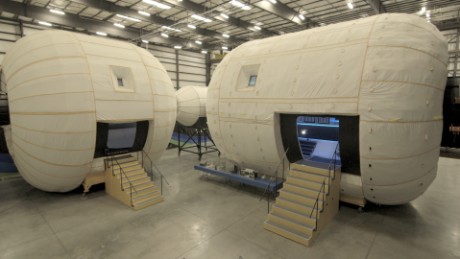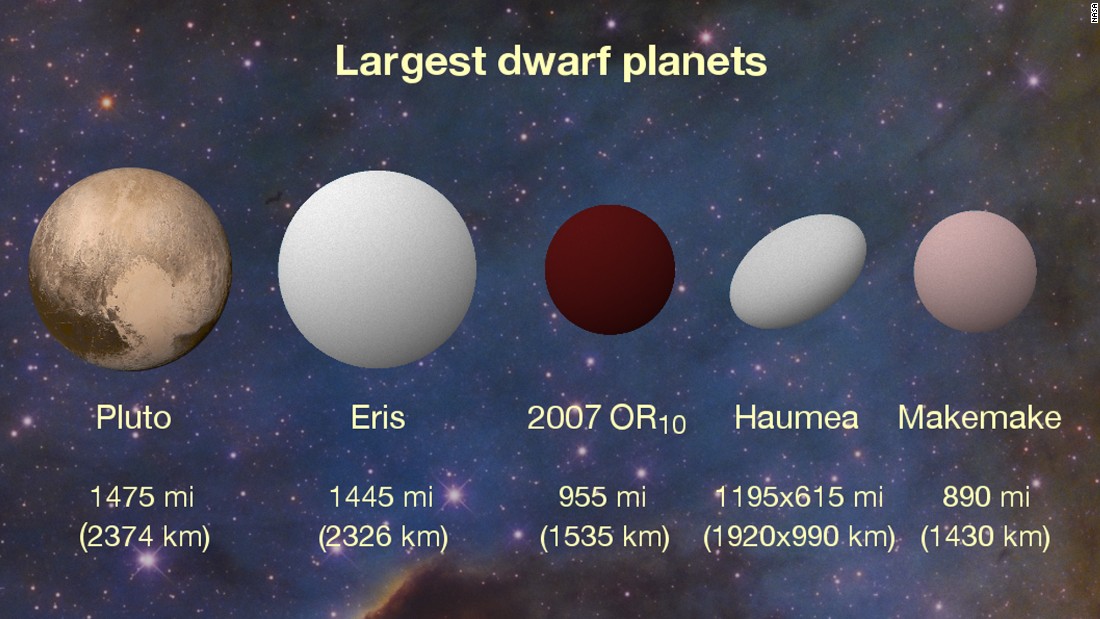Expandable habitats may take us to Mars

In sci-fi movies, space habitats are huge structures with labyrinth layouts. But Hollywood doesn't have to deal with the issues real aerospace engineers face when contemplating future space homes -- such as gravity and financial constraints.

"Gravity ... is a really serious problem," Bigelow Aerospace founder Robert Bigelow says.
He's not kidding.
NASA estimates the International Space Station cost upward of $100 billion to build in the 1990s and required more than 115 space flights to construct. At about 250 miles above Earth, it's in what's known as low-Earth orbit. In space terms, that's relatively close. What happens when we want to live on Mars?
Jason Crusan, NASA's director for Advanced Exploration Systems Division, says if we were to build the space station again today, it would be "significantly smaller." Because in the space world, smaller often means cheaper -- at least to launch.
That's why scientists are working to develop expandable space habitats. Instead of building rigid metal structures, they are building flexible buildings that can be sent into space when they're deflated. Bigelow says the reduced weight and volume of these types of habitats would make them easier and cheaper to launch.


Building expandable habitats
Bigelow's Expandable Activity Module, or BEAM, is designed to start out small and expand to four times its size once in space. The company recently attached a prototype to the International Space Station; it only took one launch with a price tag of $17.8 million. Once inflated, BEAM will add a space -- about the size of a bedroom -- to the orbiting research lab. The module will stay attached to the space station for two years to see how it withstands the harsh environment of space.
Bigelow knows that all eyes are on the performance of his module. During the test period, NASA will be paying close attention to the structural integrity of the BEAM module. These expendables need to be just as strong, if not stronger than, their metal counterparts. Bigelow is tight-lipped about the proprietary material from which the modules are made, but he told CNN that they include many layers of Kevlar-like materials and are incredibly strong.
"It's a multiple-layered structure, and when something hits the first outer layer, it fractures and breaks up," he says.
Astronauts will enter BEAM every few months to evaluate and monitor things such as temperature, pressure and radiation sensors. It will be the first time an astronaut has stepped foot in an expandable habitat in space. If the module performs well, inflatables could play a critical role in the future of space exploration.
"We would like to be part of the process of establishing a lunar station and other kinds of space outposts -- maybe someday helping to support Mars ambitions," Bigelow says.
A long road
NASA was into the benefits of expandable technology long before Bigelow arrived on the space scene.


Echo 1, an inflatable device, launched in 1960. But it took some time until soft structures were strong enough to be considered for crewed operations.
In the 1990s, NASA started working on a design concept for an inflatable living quarter for a manned mission to Mars. The program was called TransHab, but it never got beyond ground testing because the space agency abandoned it in 2000.


Bigelow licensed and further developed the technology that was developed during the TransHab program. In 2006 and 2007, Bigelow launched Genesis 1 and 2, showing that the expansion and launching systems could work.
Deep Space habitats
Bigelow's expandable habitats have only been tested in low-Earth orbit -- between 85 miles (137 kilometers) and 2,000 miles (3,219 kilometers) in altitude -- but NASA's Crusan says he thinks they will play a role in future journeys to deep space.
"These habitats are essential to executing our overall Mars endeavors," he says.
Yet the habitats that will bring humans to deep space will be considerably different from what has been seen.
"To date we've thought about habitats as stations," Crusan says. "All of our habitats in the future ... will also have propulsion with the engines to take us to our destinations."
Which brings us back to the issue of size.
"The heavier something is, the harder it's going to be to move around the solar system," Crusan says.


The International Space Station has the volume of a six-bedroom house, and, according to NASA, it's three to four times the volume needed to send four astronauts to and from Mars.
Bigelow Aerospace isn't the only name in the space habitat industry. NextSTEP, NASA's primary funding program for commercial industries, has contracts with Boeing, Lockheed Martin and Orbital ATK to develop designs for space habitats.
NASA plans to invest $65 million in commercial industries in the next 14 months. It also intends to spend more than $50 million internally this year on such things as life support systems, radiation protection and logistics management -- all of which need to be considered when sending humans to live in space.

Emoticon